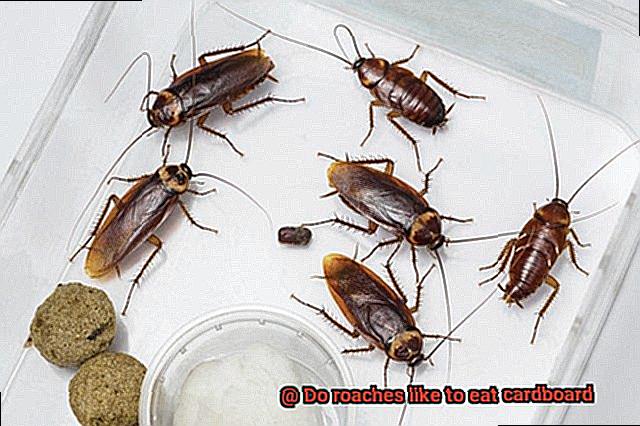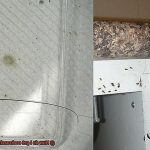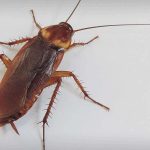Have you ever spotted a cockroach scurrying across your kitchen floor and wondered what it might be feasting on? Unfortunately, the answer may be more unsettling than you think – cardboard boxes are a favorite snack of these pesky pests. That’s right, roaches have a reputation for consuming a variety of materials, including paper products like cardboard.
But why are roaches so drawn to this seemingly unappetizing material? Well, as omnivores with a unique digestive system, they can break down tough materials like cellulose found in cardboard. Additionally, the starchy glue used to bind layers of paper together contains proteins and sugars that roaches simply can’t resist.
However, the problem doesn’t end there. Cardboard also provides an ideal hiding place for roaches to lay their eggs and thrive. Its porous nature absorbs moisture and provides insulation, making it an attractive breeding ground for these unwanted guests.
In this blog post, we’ll explore everything you need to know about roaches and their love affair with cardboard. We’ll delve deeper into why they’re attracted to this material, the potential dangers of allowing them to snack on your boxes, and most importantly – how to prevent infestations from occurring in the first place.
So sit tight and get ready to learn some fascinating facts about these creepy crawlers – because knowledge is power when it comes to keeping your home free from unwanted pests.
What Do Roaches Eat?
Contents
Roaches are notorious for being opportunistic feeders that will eat almost anything they come across. While cardboard may not be their favorite food, it is not uncommon for roaches to nibble on it. Why? Well, cardboard contains cellulose, an organic compound found in plant cell walls that roaches can digest with the help of microorganisms in their gut.
However, cardboard is not the only food source that attracts roaches. They are also attracted to food scraps, crumbs, and other organic matter. This is why it’s crucial to keep your living spaces clean and free of debris to prevent roach infestations.
Roaches are also known to feed on other insects, including dead roaches. This means that if you have a roach problem, it’s essential to take action quickly before the population grows too large.
Aside from their feeding habits, roaches find cardboard appealing because it provides them with a safe hiding spot during the day. They can easily use the crevices and folds of cardboard boxes to avoid predators and humans.
To effectively deal with a roach problem in your home, you must eliminate all potential food sources and hiding spots for these pests. Keep your home clean and free of debris, and address any roach problems promptly before they become too challenging to handle.

Do Roaches Prefer Cardboard?
Roaches are infamous for devouring anything from scraps of food to paper products. But do they really have a preference for cardboard boxes? The answer is yes – cardboard boxes are a common food source for roaches in both residential and commercial settings. The reason behind this is because cardboard provides an easily accessible source of fiber and cellulose, which are critical nutrients for these creepy crawlers.
However, it’s important to note that roaches are not exclusive to cardboard boxes. They will also nibble on other paper products such as books, newspapers, and even wallpaper. Additionally, roaches will consume a variety of other materials such as glue, soap, and even hair.
It’s worth mentioning that roaches are not necessarily attracted to cardboard because it tastes particularly delicious to them. Rather, they are drawn to dark, damp environments that provide them with shelter and a place to breed. Cardboard boxes provide an ideal habitat for roaches because they are often stored in moist and shadowy areas like basements or storage rooms.
What Attracts Roaches to Cardboard?
Firstly, cardboard provides an ideal environment for roaches to breed and thrive. Its porous texture allows them to lay their eggs and multiply rapidly. Additionally, cardboard is made of cellulose, a complex carbohydrate that serves as a food source for these pests.
But wait, there’s more. Cardboard also absorbs moisture, creating a damp and humid environment that roaches find irresistible. The glue used to hold cardboard boxes together contains animal-based proteins that attract roaches even further. It’s like a five-star hotel for these unwanted house guests.
Apart from providing food and shelter, cardboard boxes offer excellent hiding places for roaches. Since they are nocturnal creatures, they tend to hide during the day and come out at night to search for food. Cardboard boxes make it easy for them to evade predators and survive.
So how do we keep our homes roach-free? Well, it’s essential to minimize the use of cardboard boxes or avoid them altogether if possible. When storing items in cardboard boxes, ensure that they are stored in dry areas and regularly check them for signs of infestation. Additionally, sealing any gaps or cracks around your home can prevent roaches from entering in search of food and shelter.
Does Removing Cardboard Get Rid of Roaches?
While cardboard boxes are a favorite hiding spot for roaches, getting rid of them may not be enough to completely eradicate the problem.
Roaches are cunning creatures and can find shelter and food in many areas of your home. However, removing cardboard is still a helpful step in reducing their numbers. Cardboard traps moisture, which attracts roaches and provides an excellent hiding spot for them. By eliminating cardboard, you’re also reducing the overall moisture levels in your home and eliminating potential hiding spots.
But don’t stop there. It’s crucial to address the root cause of the infestation, which is typically poor sanitation or food storage practices. Roaches can find shelter and food in other materials such as paper or books if they’re available. So, it’s essential to keep your home clean and tidy.
Regularly vacuuming and wiping down surfaces can help eliminate potential food sources for roaches. Storing food in sealed containers and taking out the trash regularly are also essential practices. By keeping a clean home and practicing good food storage habits, you can reduce the likelihood of a roach problem in the future.
Other Food Sources for Roaches
Roaches are notorious for their scavenging habits and ability to survive on almost anything. However, their preferred food sources are starchy and sugary substances like sweets, fruits, and vegetables. Protein-rich foods such as meat, cheese, nuts, and pet food are also high on their list.
While cardboard may provide some necessary nutrients, it is not roaches’ favorite food source. They will only resort to consuming it when they have no other options available. On the other hand, decaying organic matter like leftover food particles, dead insects, and plant debris are a delicacy to these pesky pests.
One thing to keep in mind is that roaches can survive without food for several weeks if they have access to water. Therefore, it’s crucial to eliminate any standing water sources in your home to prevent them from thriving.
To effectively control a roach infestation, prevention is key. Eliminating all potential food sources and keeping your home clean and dry are essential steps towards achieving this. By adopting proper food storage habits and maintaining a tidy environment, you can keep these sneaky pests out of your home.
Conclusion
In conclusion, roaches are well-known for their scavenging habits and ability to survive on almost anything. Although cardboard may not be their preferred food source, it’s not uncommon for roaches to nibble on it as it provides a convenient source of fiber and cellulose – critical nutrients for these creepy crawlers. Moreover, the animal-based proteins in the glue used to hold cardboard boxes together attract roaches even further.
However, removing cardboard alone may not be enough to completely eliminate a roach infestation. Roaches can find shelter and food in many areas of your home. Hence, it’s essential to address the root cause of the problem by practicing good sanitation and food storage habits. Regularly vacuuming and wiping down surfaces can help remove potential food sources for roaches. Additionally, storing food in sealed containers and disposing of trash regularly are vital practices.
By maintaining a clean home and minimizing the use of cardboard boxes or avoiding them altogether if possible, you can reduce the likelihood of a future roach problem. Remember that prevention is key when it comes to controlling a roach infestation.






